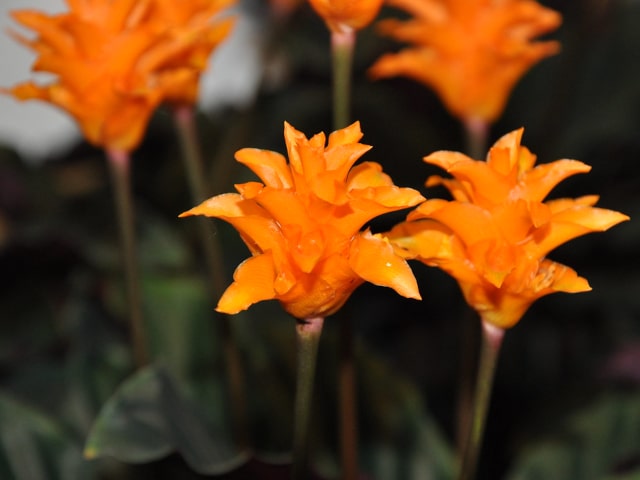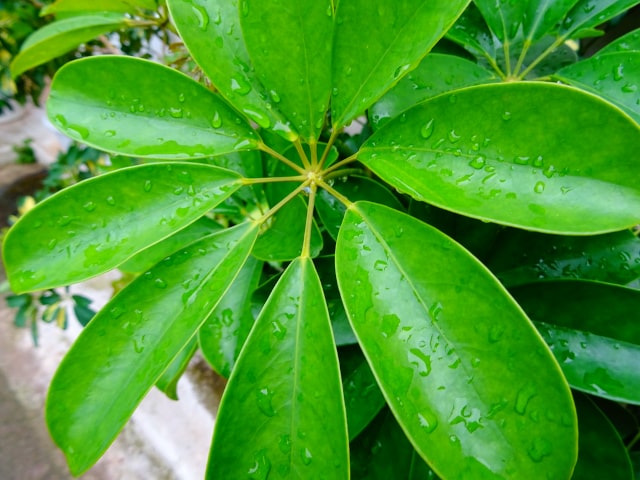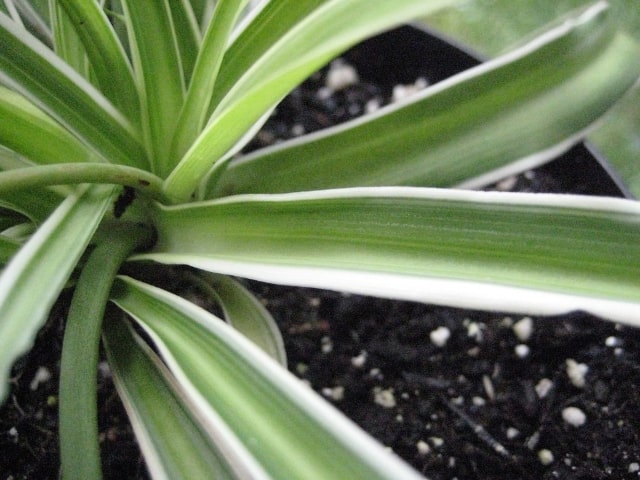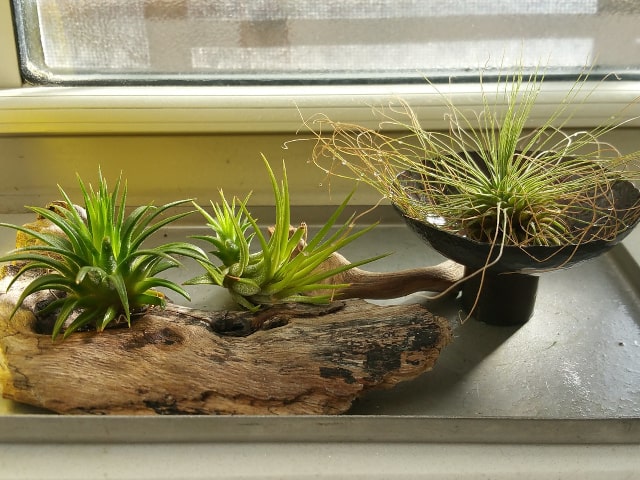
Eternal flame is a form of a Calathea plant. Native to Brazil and tropical America, this is a gorgeous household plant you can grow for its lush foliage. The Eternal flame is famous for its yellow flowers so it's often considered one of the most attractive Calathea varieties.
Basic Plant Facts
The plant known as Eternal flame has a scientific name Calathea crocata. It is known as very colorful tropical plant so it can add an exotic feel to your home. This is a beautiful tropical plant that can thrive indoors if you provide the right conditions to it.
While this plant is native to tropical America and Brazil it is important to note that it's hard to find it in the wild today. The environmental damage made these plants very rare in the wild so they are mostly found indoors.
Eternal flame plant is known as a humidity-loving plant, just like other Calathea plants. At the same time, it dislikes direct sunlight, so this is something you should keep in mind. While you can grow Eternal flame plants in your garden keep in mind that the sun may prove to be too bright if you live in a more temperate region. In fact, the best way to make your Eternal flame plant thrive is to keep it indoors.
This plant can grow approximately 1 to 2 feet in height. A good thing about it is that it is not toxic to pets (cats and dogs) so you can grow it in your home without harming your pets.
One of the best things about Eternal flame is that its leaves move. In fact, they close up in the evening, which provides a nice effect.
Flowering
Unlike other Calathea plants, which are known for their foliage only, Eternal flame is famous for its flowers. Calathea plants typically have lush foliage with numerous markings and colors but their flowers tend to be small and unimpressive. Not with Eternal flame: this plant is actually famous for its gorgeous flowers.
The name of the plant (Eternal flame) actually comes from the flowers. The blooms are orange and yellow, which makes the plant look like a flame. Flowers grow on top of the stems, a bit higher than the leaves. They have rose and red sepals but these are not clearly visible due to the large orange and yellow bracts.
The flowers on the Eternal flame last for about 2 to 3 months so you can make your home look spectacular during this time. If you like Calathea plants but are also looking for a flowering plant for your home then Eternal flame is the right way to go.
One thing to note about this plant is that foliage is unimpressive. While other Calathea plants are known for their gorgeous foliage, Eternal flame has plain leaves. This doesn't mean that the foliage is ugly: the leaves are metallic green on the outside with purple and brown undersides. The leaves are slightly wrinkled and strong. They look very nice so your Eternal flame will look great even during the non-flowering months. However, it is undeniable that other varieties of Calathea plants tend to have more impressive foliage.
You can grow your Eternal flame alone or in a combination with other plants. If you want to grow them near other plants it is always best to choose the ones that require similar care as Eternal flame.
Care Instructions
If you want to make your Eternal flame thrive you need to provide it with adequate growing conditions. Just like other varieties of Calathea it is a bit demanding but you can make it grow strong and healthy if you give it all vital conditions and proper care:
- Soil. Eternal flame prefers a soil-based potting compost with a bit of peat moss. The percentage of peat moss in the mix should be around 25%. Keep in mind that the soil should allow for easy drainage of water.
- Light. It is best to keep your Eternal flame in a bright room but without direct sunlight. It can make the colors on the leaves fade away. Also, this plant doesn't tolerate direct light so this is something to keep in mind.
- Temperature. This plant prefers warmth and high humidity levels. Never keep your Eternal flame in a room that is less than 60 degrees F (16 degrees Celsius) in temperature. Generally speaking, this plant can do well in normal room temperature, but as long as you give it good levels of humidity (see below). Make sure that the room temperature is stable and that there are no sudden temperature changes.
- Humidity. This plant loves high humidity. This is something you absolutely need to provide. It is best to mist the plant every day. Make sure to use only water that is around the room temperature - never mist with cold water! In case your Eternal flame doesn't receive enough humidity it will develop brown spots on the leaves. If misting is not enough consider investing in a humidifier: this will help your plant a lot.
- Watering. These plants love an even amount of water. This is why regular watering is so important. It is particularly vital to provide your Eternal flame with enough water during the hot summer months. Sometimes, the amount of watering needed will depend on the type of compost you use. During the winter you may water a little less.
- Fertilizing. Your Eternal flame plant needs to be fertilized regularly. Provide it with a standard liquid fertilizer every two weeks during the growing period. Stop fertilizing during the winter months.
Repotting, Propagation and Pruning
You will need to repot your Eternal flame every year or every other year. The best time to do it is in late June. This is also a good time to propagate your plant. Eternal flame, just like other varieties of Calathea, are best to be propagated by division. To propagate, simply divide your plant in two segments (or more segments if it's a very large plant). Make sure that the new plants have at least some leaves and sturdy roots. Plant them about 2 to 3 inches deep (5 to 8 cm) and keep the soil moist. The temperatures should be around 18 degrees Celsius.
It is also important to prune your Eternal flame if it becomes too bushy. It best to prune at the base, at the point where the leaf meets the stalk. Simply cut the brown edges of the leaves with scissors if you notice brown spots. These will grow back naturally so you don't have to worry about it. It's important to monitor your plant. Some brown edges are normal but if it's too much of them it might be a sign of over-watering or under-watering.
Eternal Flame Common Problems
There are some common problems with Eternal flame plants that you need to think about:
- Brown spots and edges on leaves: Some of this is normal but make sure to observe your plant. If too many leaves develop this problem it's a clear sign of over-watering or under-watering. You need to adjust the watering regime accordingly.
- Withering leaves: It is not uncommon for leaves on the Eternal flame to wither at the edges. Common cause is too much calcium in the water. To avoid this issue, make sure to water you plant with rain water and not tap water. Another possibility is that the air in the room is too dry. Improper watering regime may also be the reason behind this.
- Pests: Eternal flame is somewhat prone to pests. The most common pests that attack this plant are red spired mites. You will probably need to use a magnifying glass to notice the mites since they are small and usually difficult to spot. If you notice any pests it's important to react quickly and to treat your plant before the infestation gets worse.
Photo credit: Stefano




6 Comments
The flowers are going brown what should I do?
I have a Calathea Crocata that's looking very healthy with new leaf shoots forming at the base. However, I can't see any sign of new flower stalks. Is there something I came to encourage new flower growth?
I have just bought my first plant, which had 5 flowers, they are now starting to go brown, will more flowers come this year? Or will that be it until next year? Thank you.
The flowers on mine are starting to look brown. Do I dead head them?